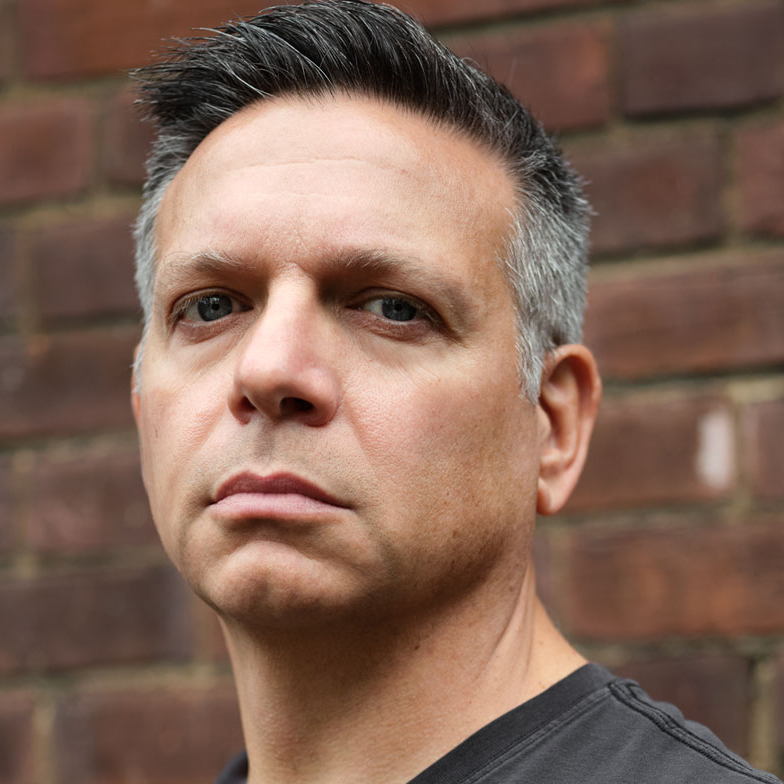
Healing hearts after a heart attack
Dr. Emilio Alarcón is developing breakthrough therapies to repair damaged hearts and keep them beating
Chapter 1 Like science fiction
“After a heart attack, the heart is most likely to be left with damage,” says Dr. Emilio Alarcón, principal investigator at the University of Ottawa Heart Institute and associate professor at the University of Ottawa. “The body is a living organism that works hard to heal us after injury. That’s precious energy we want to protect.”
Dr. Alarcón’s team has been working tirelessly on therapeutic approaches to support this healing and improve cardiac function. Over the past several years, he and his team developed biodegradable materials delivered to the heart muscle to help restore its capacity to beat.
But in 2024, a new therapeutic approach emerged: an engineered peptide-based material that has the power to safely deliver cargo molecules to the heart.
Describing his new creation like science fiction, Dr. Alarcón explains how this new generation of synthesized materials was engineered in a lab but inspired by nature. These materials, smaller than a human cell, mimic what’s naturally found in the heart, like collagen (a protein that makes up most of the heart), to restore and regenerate. This goes beyond keeping the heart beating mechanically — it heals the heart’s natural function.
Dr. Alarcón is a humble person, but he speaks with pride when he says, “I don’t oversell my research — I see the impact. And it’s all made possible by Heart & Stroke’s funding.”

Dr. Emilio Alarcón with his research assistant, Marcelo Munoz. Dr. Alarcón’s team synthesized materials that will help heal the damage caused by a heart attack.

Support from Heart & Stroke donors made Dr. Alarcón’s research possible. (In the photo: Dr. Alarcón’s research assistant Maxime Comtois-Bona).

Dr. Alarcón is proud of his team, which works relentlessly to make life-saving discoveries. (In the photo: Ryan Tu and Bryan Liu, Dr. Alarcón’s research assistants).
Chapter 2 A legacy of mentorship
Dr. Alarcón speaks highly of his team, which works relentlessly to make discoveries. “I had a postdoctoral fellow who came to Canada from Japan; very hard worker.” He was coming up against some roadblocks with earlier research on a cardiac patch in model animals, especially stitching the patch onto a mouse, which has a heart rate around 400 beats per minute — more than four times the speed of a human heart.
Watch Dr. Alarcón explain how his research will help heal hearts after a heart attack.
“He was getting defeated,” Dr. Alarcón says. “So I sat down with him and we problem-solved together. We asked how we could approach things differently. This is when we came up with the idea of peptide therapy. Instead of mechanically moving the heart to expand and contract, we are trying to revive the heart muscle.” He hopes this will minimize invasive procedures in the future.
“I see the great talent in the medical field,” he continues. “That postdoctoral fellow is now a professor in Japan.” Dr. Alarcón says investing time, energy and resources will make all the difference for the future generations — not just in life-saving research, but in people’s lives.
Above all, Dr. Alarcón wants collaboration, community and mentorship to be his legacy. “We don't only teach science; we care for people. I see compassion and understanding as the most important things within my team. Without that human aspect, we have nothing.”
Chapter 3 Radically people-centred
Dr. Alarcón identifies as mixed-race and a person with autism. He speaks openly about how there's no one-size-fits-all to research, or the talent and diversity that makes up his team and community. “Our work is very people-centred. It's about the patients and the people who work for better health care who inspire me,” he says. “Every single thing we do here starts with the patient at the centre.”
Outside the lab, Dr. Alarcón lives a full life as husband and father. “My son, Alonso, has Down syndrome, lives with autism and is a cancer survivor and was born with a hole in his heart, VSD (ventricular septic disorder).” His son and wife, Madleen, are his inspiration.
Dr. Alarcón and his team would like to acknowledge that their work is conducted in the unceded and unsurrendered lands of the Algonquin Anishinaabe people, who are the ancestral guardians of these lands.

Real stories, real impact

Can your gut help extend life after a heart transplant?
Dr. Jonathan Choy takes an experimental approach to increase heart transplant survival

Katherine's unexpected battle
When life changed in an instant, she refused to give up hope

Loving life while living with heart disease
Three surgeries have changed Suji’s heart, but not her passion for life
